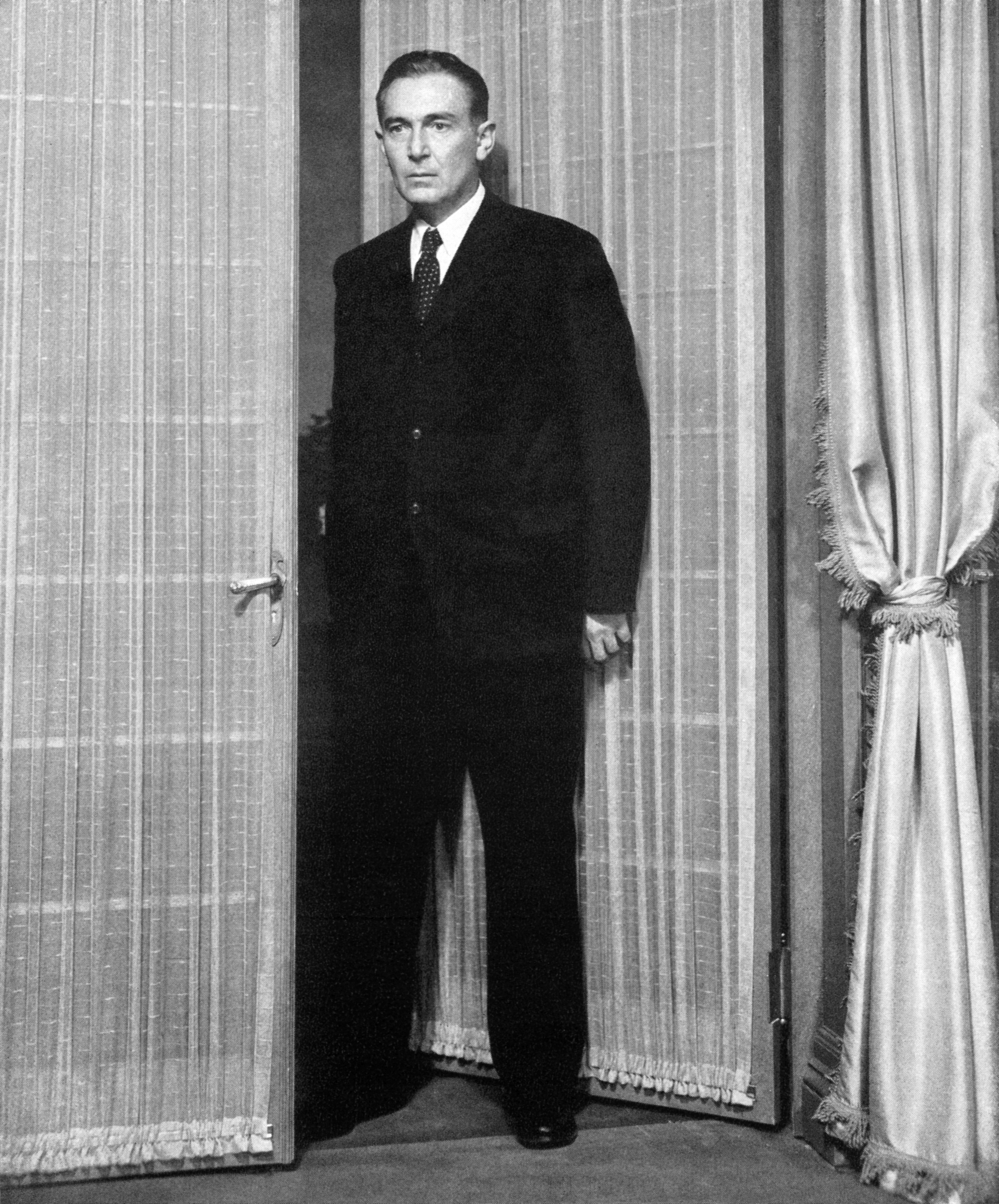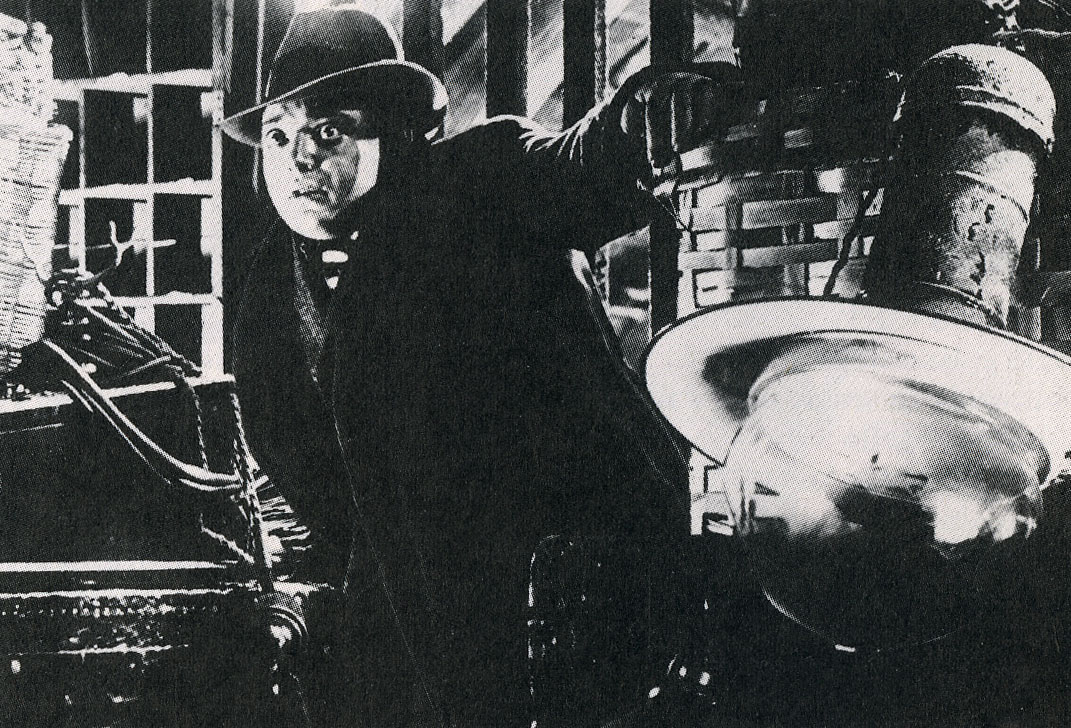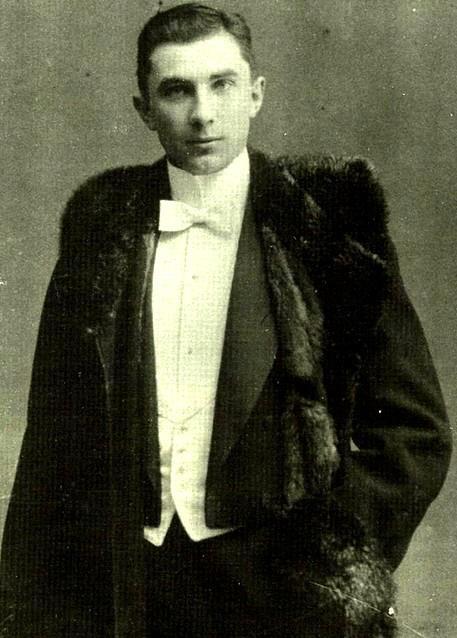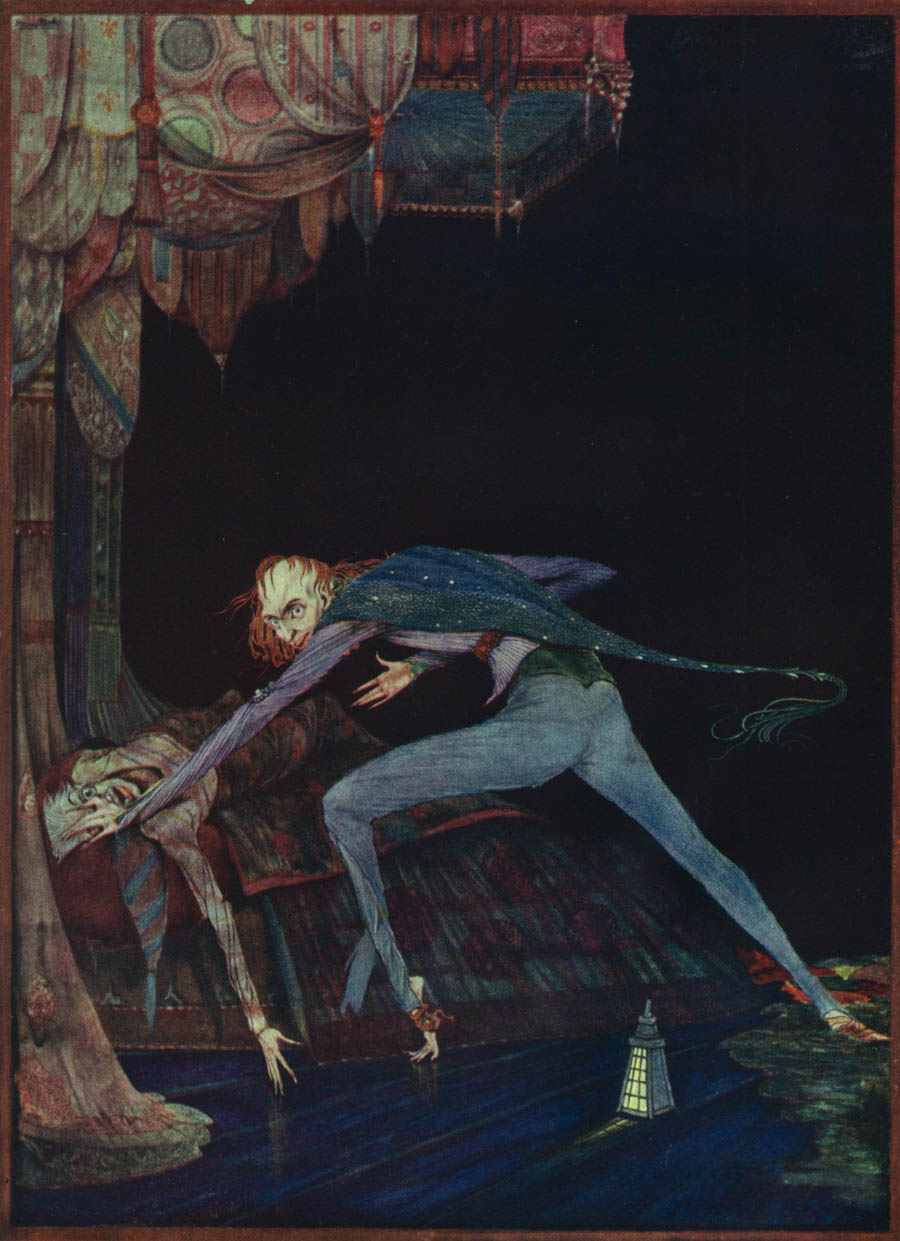|
Inner Sanctum Mysteries
''Inner Sanctum Mystery'', also known as ''Inner Sanctum'', is a popular old-time radio program that aired from January 7, 1941, to October 5, 1952. It was created by producer Himan Brown and was based on the imprint given to the mystery novels of Simon & Schuster. In all, 526 episodes were broadcast. Simon & Schuster series In 1930, the first title was published in Simon & Schuster's "Inner Sanctum" mystery series: ''I Am Jonathan Scrivener'' by Claude Houghton. Although the imprint "Inner Sanctum" also included serious drama (published with blue covers) and romance (published with red covers), for the most part it was associated with mysteries (published in green covers). Lee Wright was the editor of the series, and over the years she introduced such authors as Craig Rice, Gypsy Rose Lee, Patrick Quentin, Thomas Sterling and Anthony Boucher. Horror hosts On January 7, 1941, the ''Inner Sanctum'' radio program premiered, the name licensed by Simon & Schuster on condition th ... [...More Info...] [...Related Items...] OR: [Wikipedia] [Google] [Baidu] |
List Of Inner Sanctum Episodes
''Inner Sanctum Mystery'' is a radio drama that originally aired on the Blue Network between January 7, 1941, and October 5, 1952. The majority of the original episodes are thought to be lost. However, Episode 10 entitled “The Patient Vanishes,” written for March 11, 1941 airdate, exists and was written by Frank R. Gould, who also wrote Episode 1 and Episode 7. Below is a list of episodes and the original airdates. A total of 527 episodes were produced, but a majority are presumed to be lost. Less than 200 are known to exist today. A number of the episodes that exist are edited versions that were rebroadcast on Armed Forces Radio Service (AFRS) as part of Mystery Playhouse hosted by Peter Lorre. These episodes edited out the commercials as well as the original introductions and postscripts by Raymond. They were replaced with an introduction by Peter Lorre. Series overview Episodes Season 1: 1941 Inner Sanctum premiered on the Blue Network on January 7, 1941. Se ... [...More Info...] [...Related Items...] OR: [Wikipedia] [Google] [Baidu] |
Himan Brown
Himan Brown (July 21, 1910 – June 4, 2010Himan Brown obituary. ''The New York Times'', June 6, 2010.), also known as Hi Brown, was an American producer of radio and television programs. Over seven decades, Brown produced and directed more than 30,000 radio shows, for all of the major radio networks and syndication. He worked with such actors as , , , |
Radio Drama
Radio drama (or audio drama, audio play, radio play, radio theatre, or audio theatre) is a dramatized, purely acoustic performance. With no visual component, radio drama depends on dialogue, music and sound effects to help the listener imagine the characters and story: "It is auditory in the physical dimension but equally powerful as a visual force in the psychological dimension." Radio drama includes plays specifically written for radio, docudrama, dramatized works of fiction, as well as plays originally written for the theatre, including musical theatre, and opera. Radio drama achieved widespread popularity within a decade of its initial development in the 1920s. By the 1940s, it was a leading international popular entertainment. With the advent of television in the 1950s radio drama began losing its audience. However, it remains popular in much of the world. Recordings of OTR ( old-time radio) survive today in the audio archives of collectors, libraries and museums, as well ... [...More Info...] [...Related Items...] OR: [Wikipedia] [Google] [Baidu] |
Suspense (radio Program)
''Suspense'' is a radio drama series broadcast on CBS Radio from 1940 through 1962. One of the premier drama programs of the Old-time radio, Golden Age of Radio, was subtitled "radio's outstanding theater of thrills" and focused on Suspense (genre), suspense thriller-type scripts, usually featuring leading Hollywood actors of the era. Approximately 945 episodes were broadcast during its long run, and more than 900 still exist. ''Suspense'' went through several major phases, characterized by different hosts, sponsors, and director/producers. Formula plot devices were followed for all but a handful of episodes: the protagonist was usually a normal person suddenly dropped into a threatening or bizarre situation; solutions were "withheld until the last possible second"; and evildoers were usually punished in the end. In its early years, the program made only occasional forays into science fiction and fantasy. Notable exceptions include adaptations of Curt Siodmak's ''Donovan's Brain' ... [...More Info...] [...Related Items...] OR: [Wikipedia] [Google] [Baidu] |
Claude Rains
William Claude Rains (10 November 188930 May 1967) was a British actor whose career spanned almost seven decades. After his American film debut as Dr. Jack Griffin in ''The Invisible Man'' (1933), he appeared in such highly regarded films as ''The Adventures of Robin Hood'' (1938), '' Mr. Smith Goes to Washington'' (1939), '' The Wolf Man'' (1941), ''Casablanca'' and ''Kings Row'' (both 1942), '' Notorious'' (1946), ''Lawrence of Arabia'' (1962), and ''The Greatest Story Ever Told'' (1965). He was a Tony Award-winning actor and was a four-time nominee for the Academy Award for Best Supporting Actor. Rains was considered to be "one of the screen's great character stars" From McFarlane's ''Encyclopedia of British Film'', London: Methuen/BFI, 2003, p.545 who was, according to the ''All-Movie Guide'', "at his best when playing cultured villains". During his lengthy career, he was greatly admired by many of his acting colleagues, such as Bette Davis, Vincent Sherman, Ronald Neame, Al ... [...More Info...] [...Related Items...] OR: [Wikipedia] [Google] [Baidu] |
Paul Lukas
Paul Lukas (born Pál Lukács; 26 May 1894 – 15 August 1971) was a Hungarian actor. He won the Academy Award for Best Actor, and the first Golden Globe Award for Best Actor – Motion Picture Drama for his performance in the film ''Watch on the Rhine'' (1943), reprising the role he created on the Broadway stage. Biography Lukas was born Pál Lukács in Budapest into a Jewish family, the son of Adolf Munkácsi and Mária Schneckendorf. He was later adopted by Mária (née Zilahy) and János Lukács, an advertising executive. Lukas made his stage debut in Budapest in 1916 and his film debut in 1917. At first, he played elegant, smooth womanizers, but increasingly he became typecast as a villain. He had a successful stage and film career in Hungary, Germany, and Austria, where he worked with Max Reinhardt. He arrived in Hollywood in 1927 and became a naturalized citizen of the United States in 1937. In 1935 he built a home near the new Racquet Club of Palm Springs, Califor ... [...More Info...] [...Related Items...] OR: [Wikipedia] [Google] [Baidu] |
Peter Lorre
Peter Lorre (; born László Löwenstein, ; June 26, 1904 – March 23, 1964) was a Hungarian and American actor, first in Europe and later in the United States. He began his stage career in Vienna, in the Austro-Hungarian Empire, before moving to Germany where he worked first on the stage, then in film in Berlin in the late 1920s and early 1930s. Lorre caused an international sensation in the Weimar Republic-era film '' M'' (1931), directed by Fritz Lang, in which he portrayed a serial killer who preys on little girls. Of Jewish descent, Lorre left Germany after Adolf Hitler and the Nazi Party came to power. His second English-language film, following the multiple-language version of ''M'' (1931), was Alfred Hitchcock's '' The Man Who Knew Too Much'' (1934), made in the United Kingdom. Eventually settling in Hollywood, he later became a featured player in many Hollywood crime and mystery films. In his initial American films, '' Mad Love'' and ''Crime and Punishment'' (both 193 ... [...More Info...] [...Related Items...] OR: [Wikipedia] [Google] [Baidu] |
Helen Hayes
Helen Hayes MacArthur ( Brown; October 10, 1900 – March 17, 1993) was an American actress whose career spanned 80 years. She eventually received the nickname "First Lady of American Theatre" and was the second person and first woman to have won an Emmy, a Grammy, an Oscar, and a Tony Award (an EGOT). She was also the first person to win the Triple Crown of Acting The Triple Crown of Acting is a term used in the American entertainment industry to describe actors who have won a competitive Academy Award, Emmy Award, and Tony Award in the acting categories, the highest accolades recognized in American film, t ...; to date, the only other person to have accomplished both is Rita Moreno. Hayes also received the Presidential Medal of Freedom, America's highest civilian honor, from President Ronald Reagan in 1986. In 1988, she was awarded the National Medal of Arts. The annual Helen Hayes Awards, which have recognized excellence in professional theatre in greater Washington, DC, si ... [...More Info...] [...Related Items...] OR: [Wikipedia] [Google] [Baidu] |
Mary Astor
Mary Astor (born Lucile Vasconcellos Langhanke; May 3, 1906 – September 25, 1987) was an American actress. Although her career spanned several decades, she may be best remembered for her performance as Brigid O'Shaughnessy in '' The Maltese Falcon'' (1941). Astor began her long motion picture career as a teenager in the silent movies of the early 1920s. When talkies arrived, her voice was initially considered too masculine and she was off the screen for a year. After she appeared in a play with friend Florence Eldridge, film offers returned, and she resumed her career in sound pictures. In 1936, Astor's career was nearly destroyed by scandal. She had an affair with playwright George S. Kaufman and was branded an adulterous wife by her ex-husband during a custody fight over their daughter. Overcoming these stumbling blocks in her private life, she went on to greater film success, eventually winning an Academy Award for Best Supporting Actress for her portrayal of concert p ... [...More Info...] [...Related Items...] OR: [Wikipedia] [Google] [Baidu] |
Bela Lugosi
Béla Ferenc Dezső Blaskó (; October 20, 1882 – August 16, 1956), known professionally as Bela Lugosi (; ), was a Hungarian and American actor best remembered for portraying Count Dracula in the 1931 horror classic ''Dracula'', Ygor in ''Son of Frankenstein'' (1939) and his roles in many other horror films from 1931 through 1956. Lugosi began acting on the Hungarian stage in 1902. After playing in 172 different productions in his native Hungary, Lugosi moved on to appearing in Hungarian silent films in 1917. He had to suddenly emigrate to Germany after the failed Hungarian Communist Revolution of 1919 because of his former socialist activities (organizing a stage actors' union), leaving his first wife in the process. He acted in several films in Weimar Germany, before arriving in New Orleans as a seaman on a merchant ship, then making his way north to New York City and Ellis Island. In 1927, he starred as Count Dracula in a Broadway adaptation of Bram Stoker's novel, mo ... [...More Info...] [...Related Items...] OR: [Wikipedia] [Google] [Baidu] |
Boris Karloff
William Henry Pratt (23 November 1887 – 2 February 1969), better known by his stage name Boris Karloff (), was an English actor. His portrayal of Frankenstein's monster in the horror film ''Frankenstein'' (1931) (his 82nd film) established him as a horror icon, and he reprised the role for the sequels ''Bride of Frankenstein'' (1935) and ''Son of Frankenstein'' (1939). He also appeared as Imhotep in ''The Mummy'' (1932), and voiced the Grinch in, as well as narrating, the animated television special of Dr. Seuss' ''How the Grinch Stole Christmas!'' (1966), which won him a Grammy Award. Aside from his numerous film roles (174 films), Karloff acted in many live stage plays and appeared on dozens of radio and television programs as well. For his contribution to film and television, Karloff was awarded two stars on the Hollywood Walk of Fame on 8 February 1960. Early life Karloff was born William Henry Pratt on 23 November 1887, [...More Info...] [...Related Items...] OR: [Wikipedia] [Google] [Baidu] |
The Tell-Tale Heart
"The Tell-Tale Heart" is a short story by American writer Edgar Allan Poe, first published in 1843. It is related by an unnamed narrator who endeavors to convince the reader of the narrator's sanity while simultaneously describing a murder the narrator committed. The victim was an old man with a filmy pale blue "vulture-eye", as the narrator calls it. The narrator emphasizes the careful calculation of the murder, attempting the perfect crime, complete with dismembering the body in the bathtub and hiding it under the floorboards. Ultimately, the narrator's actions result in hearing a thumping sound, which the narrator interprets as the dead man's beating heart. The story was first published in James Russell Lowell's ''The Pioneer'' in January 1843. "The Tell-Tale Heart" is often considered a classic of the Gothic fiction genre and is one of Poe's best known short stories. The specific motivation for murder (aside from the narrator's hatred of the old man's eye), the relationship ... [...More Info...] [...Related Items...] OR: [Wikipedia] [Google] [Baidu] |







.jpg)
